Do you have a question about the Samsung C27HG70 and is the answer not in the manual?
Guidelines for safely storing the product to prevent damage or stains.
Advice on preventing screen burn-in, eye strain, and handling a hot screen during use.
Guidelines for handling the product, storing accessories, and maintaining a safe operating environment.
Details the function and location of the JOG button and Power LED.
Explains how to use the function keys for navigation and accessing menus.
Describes the shortcut keys for accessing custom game modes.
Explains how to navigate the OSD menu using the JOG button and function keys.
Describes how to change the input signal source using the Function Key Guide.
Details how to enable or disable the Eye Saver Mode and its limitations.
Explains how to turn off the monitor using the Function Key Guide.
Explains JOG button functions when the monitor displays no signal or is in power saving mode.
Details JOG button operations for navigating the main menu and sublists.
Explanation of the Auto Mute function and its effect on audio quality.
Details the function of each port located on the reverse side of the monitor.
Information on USB ports, including super charging capabilities and PC connectivity.
Step-by-step guide for updating the monitor's software using a USB drive.
Details supported USB disk formats and the required file naming convention for updates.
Provides reasons and solutions for 'No valid update files found' errors during USB updates.
Explains the consequences of interrupting a software update and potential version reversion.
Instructions and guidelines for adjusting the monitor's tilt and height safely.
Visual guide for rotating the monitor screen to portrait orientation.
Important cautions to prevent damage during screen rotation, especially regarding grip and angle.
Steps to secure the monitor using an anti-theft locking device.
Guidelines on how to safely hold and move the monitor to prevent damage or injury.
Detailed steps for attaching the monitor stand to the base and neck.
Advice on safely opening the packaging and handling the product's protective materials.
Step-by-step instructions for detaching the monitor stand for wall mounting.
Warning to avoid pressing down on the monitor during stand removal to prevent damage.
Instructions for attaching the bracket wall mount to the monitor.
Important notes on screw length, VESA compliance, and mounting kit requirements.
Guide for connecting the monitor to a PC using an HDMI cable.
Instructions for connecting via HDMI-DVI cable, noting audio limitations.
Details on connecting the monitor using a DisplayPort cable and recommended length.
Instructions for connecting headphones and microphones to the monitor.
Guide for connecting audio output devices using the audio cable.
Explains how to connect the monitor to a PC via USB to use it as a hub.
Details the benefits of using the monitor as a USB hub for connecting multiple devices.
Information on using USB 3.0 ports for fast charging, including SS2 port capabilities.
Instructions for organizing and tidying up connected cables using the provided holder.
Warning regarding potential cable damage during rotation and how to handle it.
Recommendations for maintaining proper posture, viewing distance, and screen angle for comfort.
Describes various picture modes like Custom, High-Brightness, FPS, RTS, RPG, AOS, sRGB, and Cinema.
Explains automatic picture settings (Dynamic, Standard, Movie, Custom) for AV input.
Explains FreeSync to eliminate screen tearing and lists modes like Off, Standard, and Ultimate Engine.
Guide on how to enable FreeSync via OSD menu and AMD Radeon Settings.
Lists potential symptoms and troubleshooting steps when using FreeSync during gameplay.
Options for adjusting screen size and aspect ratio in PC mode (Auto, Wide, 17"-23").
Details screen size options (4:3, 16:9, Screen Fit) for AV mode and supported conditions.
Details various picture modes like Custom, High-Brightness, FPS, RTS, RPG, AOS, sRGB, and Cinema.
Explains automatic picture settings (Dynamic, Standard, Movie, Custom) for AV input.
Guide for adjusting Red, Green, Blue saturation and Color Tone (Cool, Normal, Warm, Custom).
Instructions for adjusting the middle level of luminance (Gamma) with different modes.
Explains how to adjust HDMI Black Level (Normal, Low) to correct image quality degradation.
Details how to adjust the horizontal (H-Position) and vertical (V-Position) screen alignment.
Options for controlling local dimming (Off, Auto, On) to enhance contrast.
Details energy saving options (Off, Auto, Low, High) to reduce power consumption.
Information on using USB 3.0 ports for fast charging, including SS2 port capabilities.
Guide for selecting DisplayPort version (1.1, 1.2) and its impact on refresh rate.
Details how HDR technology enhances video images by adjusting contrast and brightness.
Lists requirements for HDR effect: supported graphics cards, games, Blu-Ray discs, and consoles.
Explains necessary OSD settings (HDMI Mode, DisplayPort Ver.) and AMD Radeon Settings for HDR.
Describes the Easy Setting Box software for partitioning monitor sections.
Notes on factors affecting Easy Setting Box installation and potential issues.
Lists OS and hardware requirements for installing the Easy Setting Box software.
Steps for performing a self-diagnosis test to check for product functionality.
Addresses issues with the screen repeatedly switching on and off during PC connection.
Troubleshooting for power LED off and 'Check Signal Cable' messages.
Steps to resolve issues with no sound or low volume, including audio cable checks.
Solutions for cases where video plays but no sound is heard, especially with HDMI-DVI cables.
Guidance on addressing beeping sounds heard when the PC is booting.
Instructions for changing the refresh rate on various Windows OS versions.
Steps to adjust screen resolution on different Windows OS versions.
Guidance on configuring power-saving mode across different Windows OS versions.
Provides specifications for Model Name, Size, and Display Area for both monitor models.
Details pixel pitch, maximum pixel clock, and power supply requirements.
Lists signal connectors and environmental conditions (operating and storage).
Information on Plug-and-Play compatibility and pixel characteristics.
Defines horizontal frequency, vertical frequency, and resolution standards for the monitor.
Lists supported resolutions, frequencies, pixel clocks, and sync polarities for HDMI connections.
Provides detailed timing information for various resolutions over HDMI connections.
Lists supported resolutions, frequencies, pixel clocks, and sync polarities for DisplayPort connections.
Provides detailed timing information for various resolutions over DisplayPort connections.
Explains horizontal and vertical frequency measurements and their importance.
Lists situations where service charges may apply even if the product is under warranty.
Details product damage caused by mishandling, improper use, or unauthorized repair.
Covers service cases related to natural disasters, consumable parts, and lack of product defect.
Guidelines for safely storing the product to prevent damage or stains.
Advice on preventing screen burn-in, eye strain, and handling a hot screen during use.
Guidelines for handling the product, storing accessories, and maintaining a safe operating environment.
Details the function and location of the JOG button and Power LED.
Explains how to use the function keys for navigation and accessing menus.
Describes the shortcut keys for accessing custom game modes.
Explains how to navigate the OSD menu using the JOG button and function keys.
Describes how to change the input signal source using the Function Key Guide.
Details how to enable or disable the Eye Saver Mode and its limitations.
Explains how to turn off the monitor using the Function Key Guide.
Explains JOG button functions when the monitor displays no signal or is in power saving mode.
Details JOG button operations for navigating the main menu and sublists.
Explanation of the Auto Mute function and its effect on audio quality.
Details the function of each port located on the reverse side of the monitor.
Information on USB ports, including super charging capabilities and PC connectivity.
Step-by-step guide for updating the monitor's software using a USB drive.
Details supported USB disk formats and the required file naming convention for updates.
Provides reasons and solutions for 'No valid update files found' errors during USB updates.
Explains the consequences of interrupting a software update and potential version reversion.
Instructions and guidelines for adjusting the monitor's tilt and height safely.
Visual guide for rotating the monitor screen to portrait orientation.
Important cautions to prevent damage during screen rotation, especially regarding grip and angle.
Steps to secure the monitor using an anti-theft locking device.
Guidelines on how to safely hold and move the monitor to prevent damage or injury.
Detailed steps for attaching the monitor stand to the base and neck.
Advice on safely opening the packaging and handling the product's protective materials.
Step-by-step instructions for detaching the monitor stand for wall mounting.
Warning to avoid pressing down on the monitor during stand removal to prevent damage.
Instructions for attaching the bracket wall mount to the monitor.
Important notes on screw length, VESA compliance, and mounting kit requirements.
Guide for connecting the monitor to a PC using an HDMI cable.
Instructions for connecting via HDMI-DVI cable, noting audio limitations.
Details on connecting the monitor using a DisplayPort cable and recommended length.
Instructions for connecting headphones and microphones to the monitor.
Guide for connecting audio output devices using the audio cable.
Explains how to connect the monitor to a PC via USB to use it as a hub.
Details the benefits of using the monitor as a USB hub for connecting multiple devices.
Information on using USB 3.0 ports for fast charging, including SS2 port capabilities.
Instructions for organizing and tidying up connected cables using the provided holder.
Warning regarding potential cable damage during rotation and how to handle it.
Recommendations for maintaining proper posture, viewing distance, and screen angle for comfort.
Describes various picture modes like Custom, High-Brightness, FPS, RTS, RPG, AOS, sRGB, and Cinema.
Explains automatic picture settings (Dynamic, Standard, Movie, Custom) for AV input.
Explains FreeSync to eliminate screen tearing and lists modes like Off, Standard, and Ultimate Engine.
Guide on how to enable FreeSync via OSD menu and AMD Radeon Settings.
Lists potential symptoms and troubleshooting steps when using FreeSync during gameplay.
Options for adjusting screen size and aspect ratio in PC mode (Auto, Wide, 17"-23").
Details screen size options (4:3, 16:9, Screen Fit) for AV mode and supported conditions.
Details various picture modes like Custom, High-Brightness, FPS, RTS, RPG, AOS, sRGB, and Cinema.
Explains automatic picture settings (Dynamic, Standard, Movie, Custom) for AV input.
Guide for adjusting Red, Green, Blue saturation and Color Tone (Cool, Normal, Warm, Custom).
Instructions for adjusting the middle level of luminance (Gamma) with different modes.
Explains how to adjust HDMI Black Level (Normal, Low) to correct image quality degradation.
Details how to adjust the horizontal (H-Position) and vertical (V-Position) screen alignment.
Options for controlling local dimming (Off, Auto, On) to enhance contrast.
Details energy saving options (Off, Auto, Low, High) to reduce power consumption.
Information on using USB 3.0 ports for fast charging, including SS2 port capabilities.
Guide for selecting DisplayPort version (1.1, 1.2) and its impact on refresh rate.
Details how HDR technology enhances video images by adjusting contrast and brightness.
Lists requirements for HDR effect: supported graphics cards, games, Blu-Ray discs, and consoles.
Explains necessary OSD settings (HDMI Mode, DisplayPort Ver.) and AMD Radeon Settings for HDR.
Describes the Easy Setting Box software for partitioning monitor sections.
Notes on factors affecting Easy Setting Box installation and potential issues.
Lists OS and hardware requirements for installing the Easy Setting Box software.
Steps for performing a self-diagnosis test to check for product functionality.
Addresses issues with the screen repeatedly switching on and off during PC connection.
Troubleshooting for power LED off and 'Check Signal Cable' messages.
Steps to resolve issues with no sound or low volume, including audio cable checks.
Solutions for cases where video plays but no sound is heard, especially with HDMI-DVI cables.
Guidance on addressing beeping sounds heard when the PC is booting.
Instructions for changing the refresh rate on various Windows OS versions.
Steps to adjust screen resolution on different Windows OS versions.
Guidance on configuring power-saving mode across different Windows OS versions.
Provides specifications for Model Name, Size, and Display Area for both monitor models.
Details pixel pitch, maximum pixel clock, and power supply requirements.
Lists signal connectors and environmental conditions (operating and storage).
Information on Plug-and-Play compatibility and pixel characteristics.
Defines horizontal frequency, vertical frequency, and resolution standards for the monitor.
Lists supported resolutions, frequencies, pixel clocks, and sync polarities for HDMI connections.
Provides detailed timing information for various resolutions over HDMI connections.
Lists supported resolutions, frequencies, pixel clocks, and sync polarities for DisplayPort connections.
Provides detailed timing information for various resolutions over DisplayPort connections.
Explains horizontal and vertical frequency measurements and their importance.
Lists situations where service charges may apply even if the product is under warranty.
Details product damage caused by mishandling, improper use, or unauthorized repair.
Covers service cases related to natural disasters, consumable parts, and lack of product defect.
| Color | matte dark blue black, black |
|---|---|
| Screen Type | led |
| Tiltable | yes |
| Touch Screen | no |
| Webcam | no |
| OS Compatibility | windows |
| Screen Size | 27 inches |
| Panel Type | va |
| Aspect Ratio | 16:9 |
| Resolution | 2560 x 1440 |
| Native Resolution | 2560 x 1440 |
| Refresh Rate | 144hz |
| Horizontal Viewing Angle | 178 degrees |
| Vertical Viewing Angle | 178 degrees |
| Response Time | 1 milliseconds |
| Brightness | 350 candela per square meter |
| Contrast Ratio | 3000:1 |
| Synchronization | freesync (amd adaptive sync) |
| HDR | yes |
| HDR Format | hdr 10 |
| Built-In Speakers | no |
| HDMI Ports | 2 |
| Display Port Inputs | 1 |
| VGA Ports | 1 |
| DVI | 6 |
| Thunderbolt Ports | 0 |
| Headphones Output | yes |
| Voice Assistant | no |
| Power Saving Mode | 0.5 watts |
| Power Consumption | 100 watts |
| Depth with Stand | 15.4 inches |
| Height with Stand | 21.92 inches |
| Width with Stand | 24.6 inches |
| Depth without Stand | 3.67 inches |
| Height without Stand | 14.46 inches |
| Net Weight without Stand | 13.9 pounds |

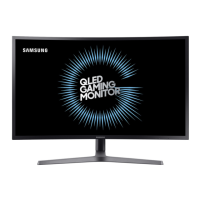

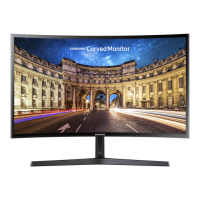

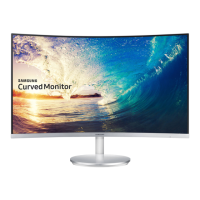


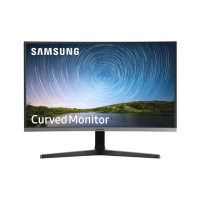
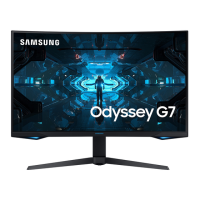


